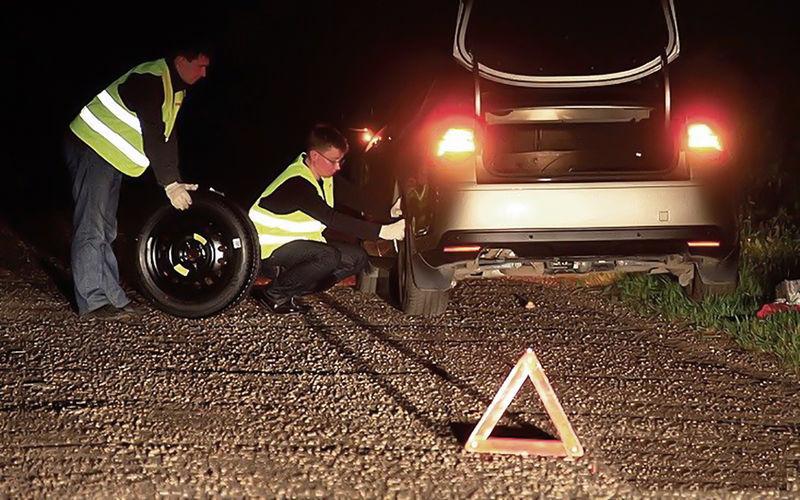The Road Safety Authority (RSA) has issued a warning to road users ahead of difficult driving conditions over the next few days.
The advice comes on foot of three weather warnings issued by Met Éireann earlier today, Wednesday, March 11.
The warnings will effect 11 counties altogether: a Status Orange wind warning for Co. Donegal; a Status Yellow snow/ice warning for Co. Donegal; and a Status Yellow wind warning for counties Cavan, Monaghan, Dublin, Louth, Meath, Galway, Leitrim, Mayo, Sligo, and Clare.
The latter of these warnings will also apply to Co. Donegal when the Status Orange warning is not in effect.
Motorists traveling in these counties at the affected times are being advised to check the local traffic and weather conditions in the area before setting out on a journey.
For motorists driving in wet or windy conditions, the RSA gives the following advice:
Control of a vehicle may be affected by crosswinds, particularly high-sided vehicles and motorcycles;
Beware of objects blown onto the road, and expect road conditions to change quickly;
Watch out for fallen or falling debris, and vehicles veering across the road;
Drivers should allow extra space between themselves and vulnerable road users, such as cyclists and motorcyclists, as they may be blown off-course;
Drivers need to slow-down in wet weather conditions, especially on high-speed roads such as dual carriageways and motorways, where there is an increased danger of aquaplaning;
Choose another route if the road ahead is flooded – do not drive through a flood. Floods could be deeper than they appear, and trees and branches in the water may not be visible;
Drivers should always follow recommended routes and obey signs closing roads to traffic;
After going through water, drive slowly with your foot on the brake pedal for a short distance, which helps to dry the brakes;
Drive with dipped headlights at all times.
The RSA has also outlined advice for cyclists, motorcyclists, and pedestrians.
This includes: wearing bright clothing with reflective armbands or a belt, as visibility for drivers will be reduced; taking special care when crossing the road or cycling in high winds; walking on footpaths where possible; and keeping an eye out for falling debris, especially in urban areas.
In terms of dealing with snow and ice, drivers are advised to:
Clear windows and mirrors with a screen scraper and de-icer – not hot water as this can crack the glass;
Remove snow from your vehicle, as it can slide onto the windows during braking and restrict your view;
Slow down; use all controls delicately, and leave extra distance between yourself and the vehicle in front. Avoid oversteering, harsh braking and harsh acceleration. Use the highest gear possible. Select a low gear when traveling downhill;
Do not use the tail lights of the car in front as a guide. In heavy snow, use your fog lights, turn down the radio and let down the window slightly, so traffic can be heard;
Use dipped headlights at all times, and fog lights in heavy snow;
Watch out for vulnerable road users and allow extra space to pedestrians, cyclists and motorcyclists.
Pedestrians are advised to: wear bright clothing, or ideally a high-visibility jacket or reflective armbands and belt; wear appropriate footwear; and not underestimate the danger of ice, using extreme caution when walking in icy areas.
Finally, the advice to motorcyclists for taking to the road in snowy and icy conditions is to not compromise their safety by going on a journey when they could cancel it or use alternative transport.
Motorcyclists should also: wear a high-visibility vest; ensure lights are working properly, and avoid wearing a dark visor in bad light conditions.
Also, other road users may not expect motorcyclists, which could compromise safety.
